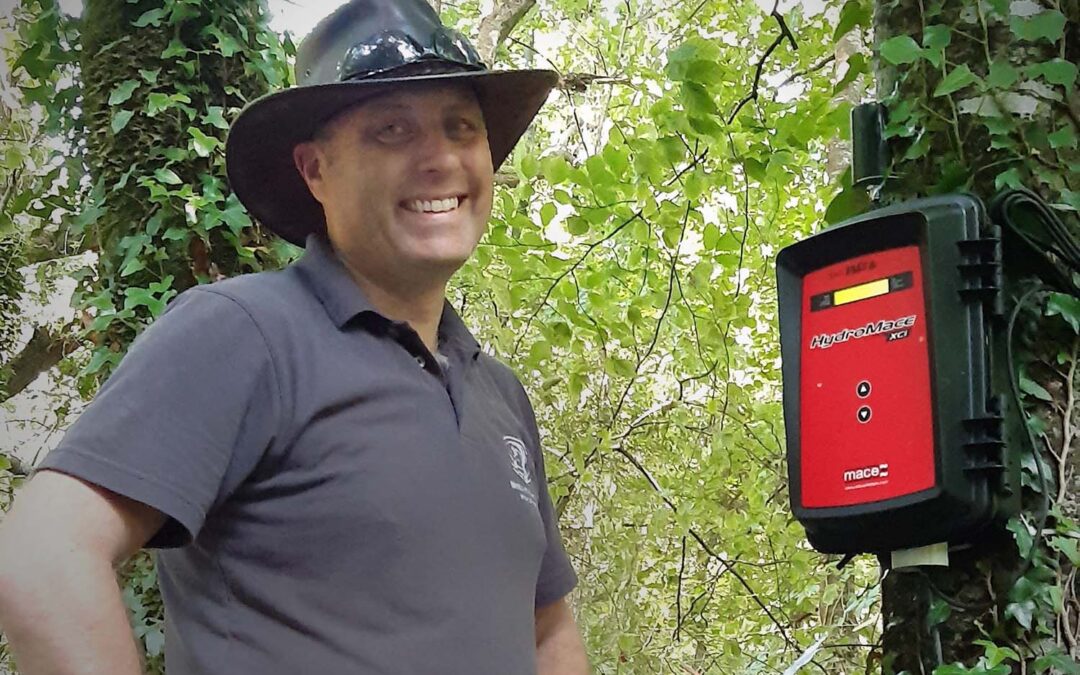Our Senior Monitoring Officer Simon Browning talks to the Cornwall AONB about our latest monitoring project.
THREE new residents at the Cornish Seal Sanctuary will be under observation by our monitoring team, but they aren’t seals.
The Sanctuary has been joined by rescued young beaver sisters Twiggy and Barbara, from Scotland, and a male, Norbert, and we will be implementing an initial three-month monitoring programme as part of its Secret Creek project.
It is fantastic to play a part in this – it will undertake various research such as water quality monitoring to establish how these beavers influence their surroundings.
Our role will be to provide automatic water sampling equipment and water level sensors so that samples can be collected from upstream and downstream of the enclosure during rainfall and/or run-off events.
Those samples will then get analysed to see if the beavers’ water impoundments are improving water quality.
We will be looking at impacts such as water pollution (coliforms and E.coli), local biodiversity changes, and landscape adjustments in addition to the public perception of beavers and potential reintroduction strategies.
At Westcountry Rivers Trust, we are open to learning more about how these semi-aquatic herbivores influence in-river and river habitats and consider how their reintroduction can form a nature-based solution to issues such as climate change.
Wild beavers had been living in the UK over 400 years ago before going extinct. They were mainly hunted for their fur and castoreum, a musky secretion, thought to contain medicinal properties.
They are ‘keystone species’, which means their natural behaviour has a big impact on the landscape and wildlife.
By building dams, beavers pool water, slowing the flow in rivers and streams. This water floods an area, creating new wetland and attracting wildlife, providing a home and water source for many species.
It also aids the capacity of land to store water, helping to minimise water being released during storms and heavy rainfall, and avoiding water scarcity during drought.
And in early July, Twiggy and Barbara built their first dam on-site, while Norbert puts on weight in the beaver nursery.
Back in 2017, beavers were re-introduced to Cornwall at Woodland Valley Farm near Ladock, and other releases have taken place including on Bodmin Moor in 2020, with a wild beaver spotted feeding on the riverbank of the River Fal in early 2021.
We appreciate how appealing these wonderful creatures are but are mindful that any positive or negative impacts must not be over or under stated.
Alongside positive impacts of slowing and cleaning water there may also be negative impacts on some of our river infrastructure and on aquatic migratory species, so it is important projects, especially those working at a catchment scale, understand pros and cons.
It will be fascinating to study the impact these beavers have on this new location through evidence-based research, while helping to generate educational content to share with people visiting the Seal Sanctuary.
We will work closely with the Sanctuary’s team, who engaged with various conservation groups across the country to decide on the best use for the Secret Creek’s 5km woodland area.
From this, it was decided that beavers would make an excellent addition, providing them with the perfect habitat that will enable research to further study their impact on the environment.
The Secret Creek project is funded via the Postcode Local Trust, with licensing from Natural England and support from other organisations, including Chris Jones, director of The Beaver Trust. NatureScot licensed the re-location of beavers from Scotland to Cornwall.
Dr Roisin Campbell-Palmer and her colleague, Robert Needham, have also been integral in conducting a feasibility study on the Secret Creek area at the Sanctuary to assess suitability of the habitat for the beavers.
We will be sharing our findings as the project progresses.
The Sanctuary is calling for donations to provide expert care, carry out vital ecological surveys and create an exciting visitors’ centre where people will be able to learn about the beavers and potentially see them at work.
Visit https://sealsanctuary.sealifetrust.org/en/about-us/beavers/ to make a donation.
To see the beavers being released, visit https://youtu.be/QwESxM0k3m8.
Note: Sealife Trust – Cornish Seal Sanctuary
The charity rescues and provides expert care for sick, injured, or distressed seals and other marine animals with the aim to release them back into their natural environment if appropriate while educating people about marine life.

